
At first glance, you may struggle to determine if you’ve found flying ants, also known as carpenter ants, or termites in your home. They look very similar, but the damage they can cause is significantly different. While they both burrow into the wood in your home and are most definitely pests, termites can be devastating due to some key differences we’ll explore below. Either way, you’ll need to deal with them appropriately.
While there are telltale signs that you have termites in your home, it’s still important to identify the species correctly before treating the problem. From differences in appearance to damage caused, to signs of infestations, and finally, how to deter them from your home, we’ll cover everything there is to know about flying ants and termites.
How to tell the difference between termites and flying ants
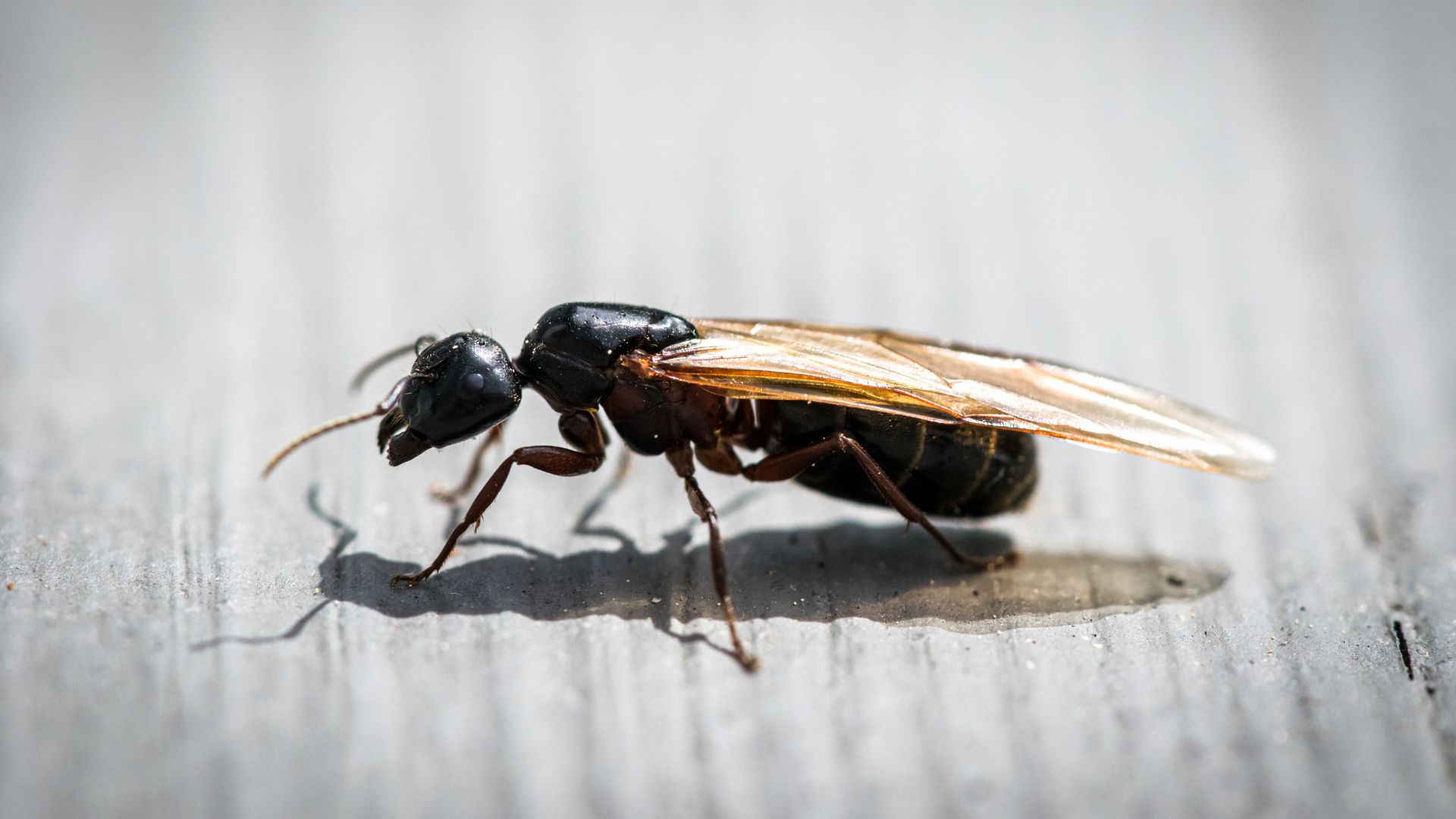
Flying ants and termites look really similar, so telling the difference between them can be tricky. For a start, not all termites have wings, so if you see a wingless insect it's more likely to be a termite than a flying ant. However, both species do have wings, as well as six legs and similar coloration with black/brown bodies. Look a little closer though and you’ll start to notice the difference.
Flying ants have a thin waist, wings a little yellow in color with the front pair larger than the back pair, and elbowed antennae. Termites have a thick waist, translucent wings of the same length between both pairs, and straight antenna.
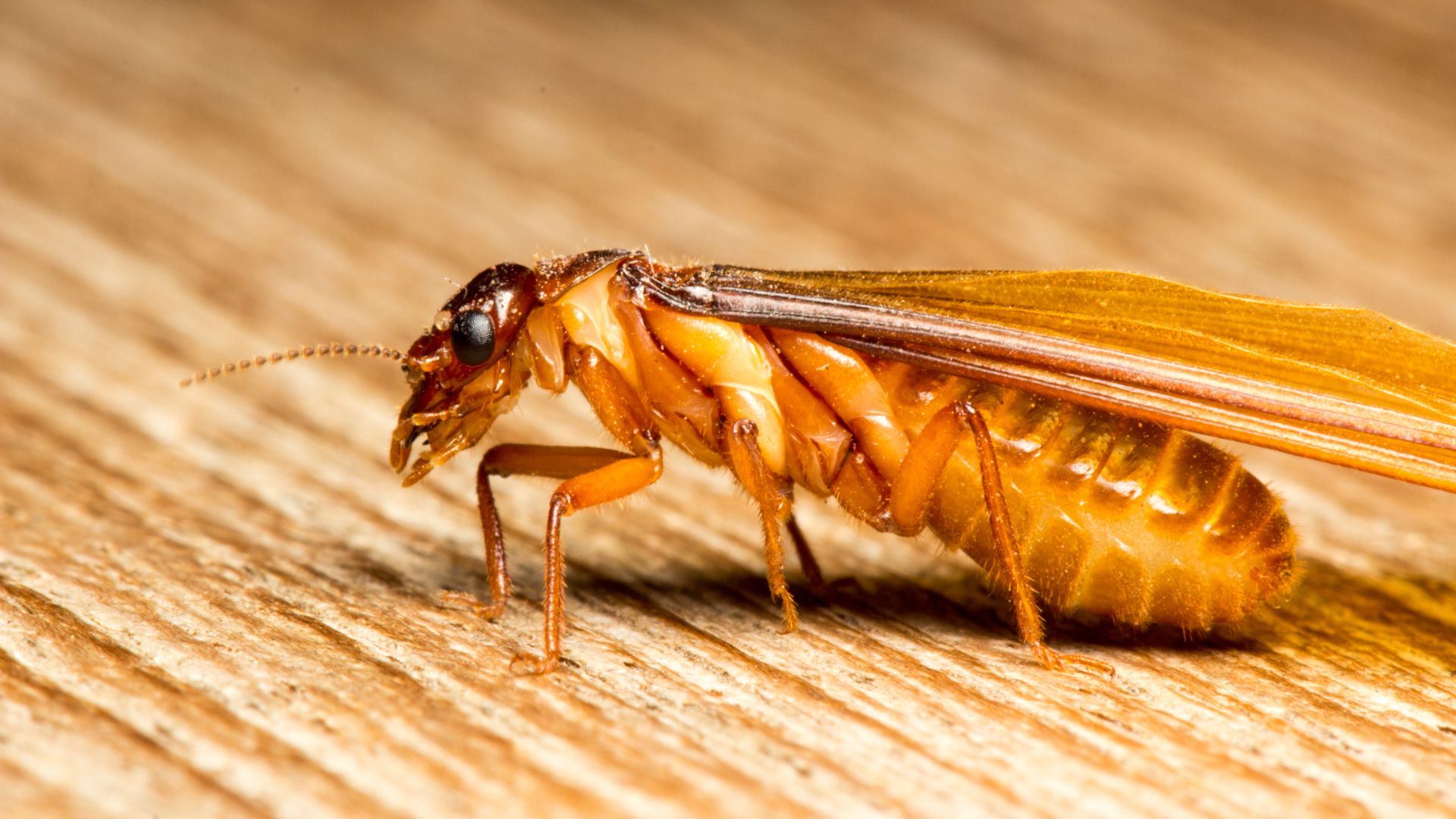
They travel in swarms and they have similar interests. They’ll both burrow into wood to create nests inside your home, but one key difference is that termites eat the wood. They feed on cellulose inside your wood. Flying ants do this purely to make a home.
So, while termites feast on the wooden structures in and around your home, flying ants survive on a diet of seeds, tree nectar, other insects, and food scraps they find discarded around your home.
Flying ants vs termites: which is worse?
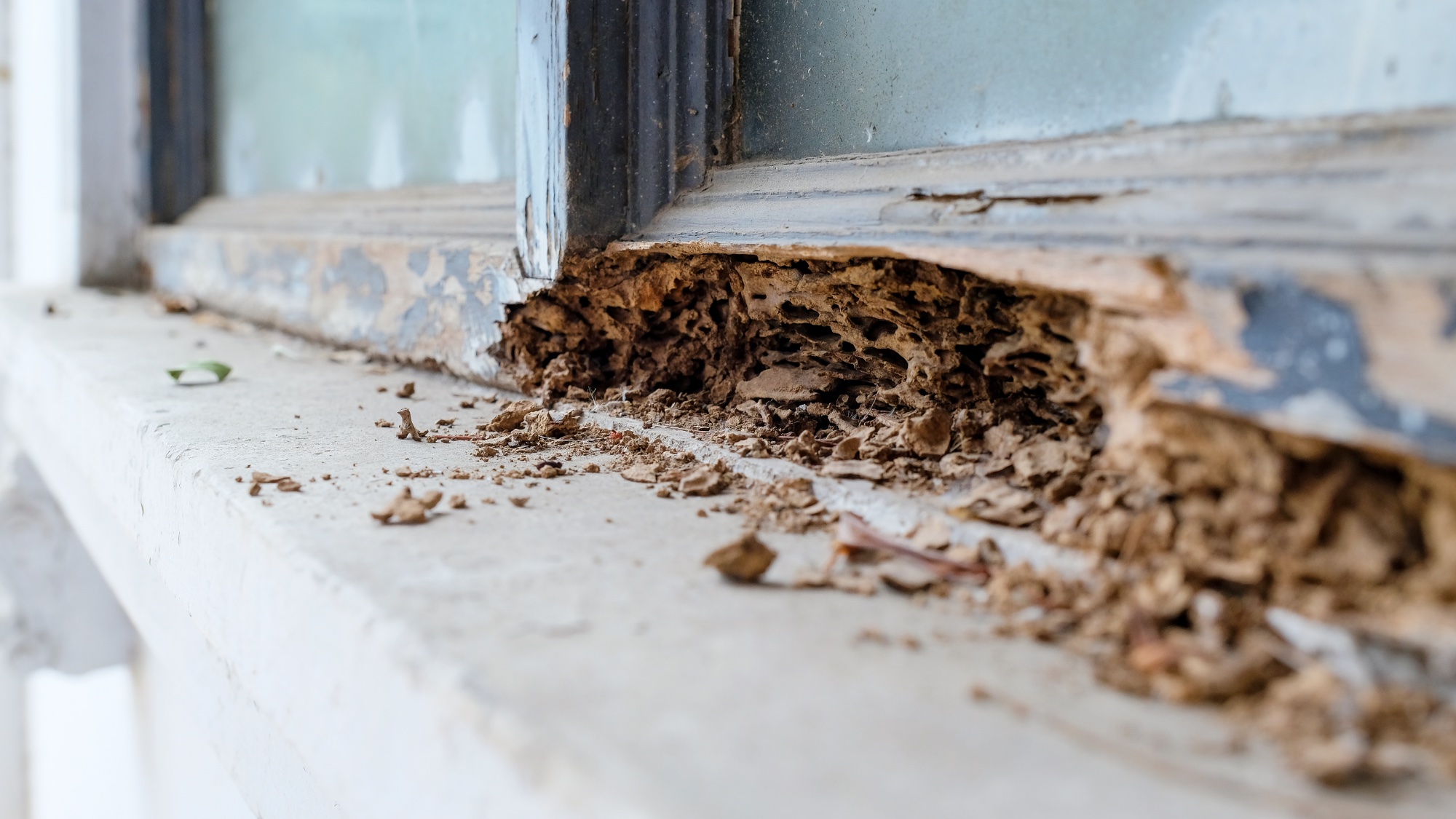
Termites are seen as a tougher problem to tackle because of how long they survive
Given that termites feast on the wood in your home, if you’ve got a termite problem, you’ve got a structural problem. They’ll destroy your home from within and while a few termites aren’t a big problem, they can swarm in hundreds of thousands causing massive damage. Flying ants will cause damage, but once they’ve tunneled to create a nest, they won’t continue to feast on your home. Unfortunately, they will breed quickly and soon become a real nuisance.
Termites are also seen as a tougher problem to tackle because of how long they survive. The queen termite can live for decades, with the rest of her colony surviving for years. Flying ant queens, on the other hand, only live for a few years, and their workers a few days to several months. So, if you’ve got a termite problem, it’ll hang around a lot longer.
Both cause extensive damage to your homes though, so it’s important to keep an eye out for signs of infestation and follow our tips below on how to deter them from your home.
How to tell whether you have termites or flying ants
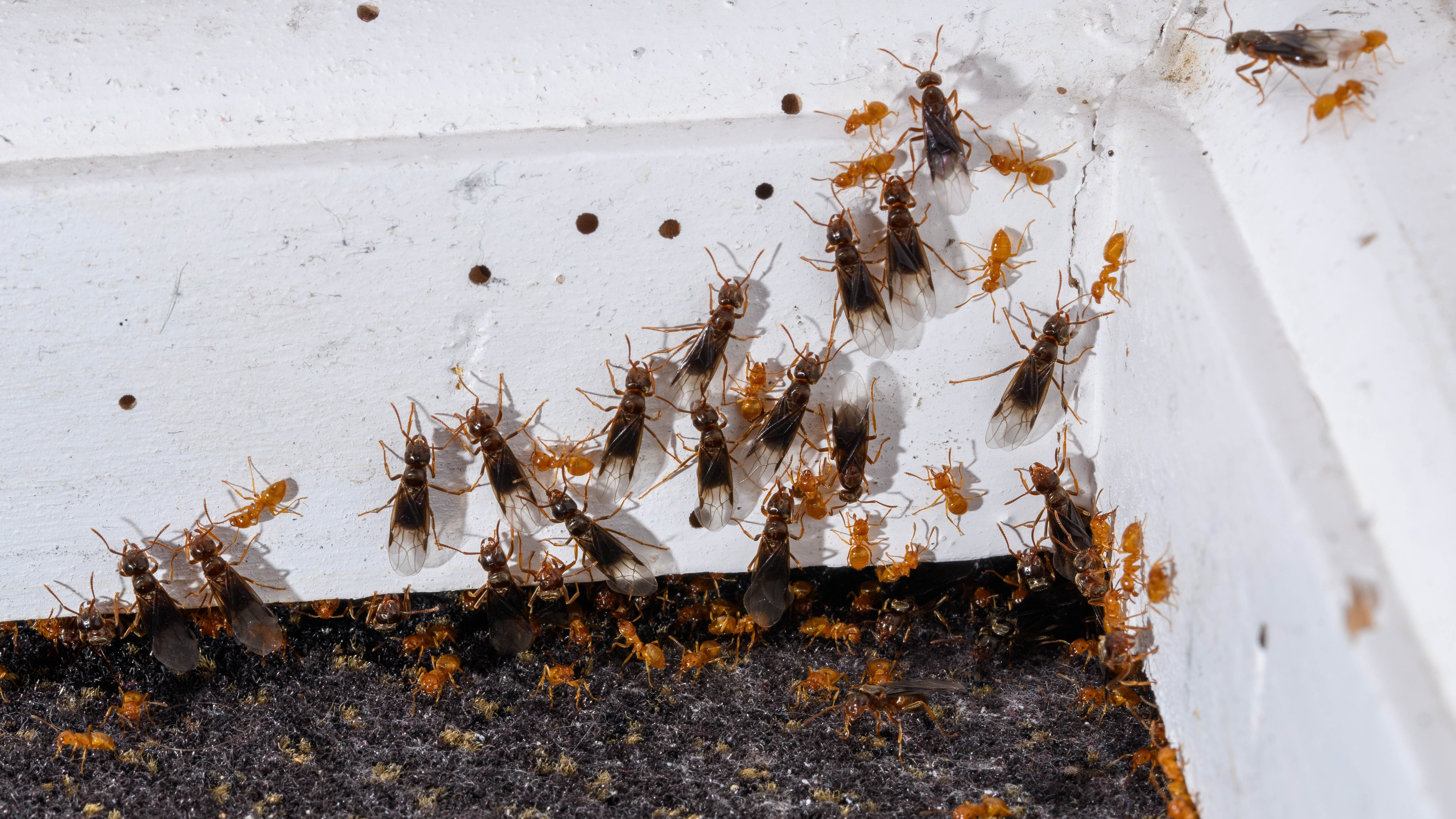
The best way to know if you’ve got an infestation is by inspecting your home. If you’ve noticed a flying ant or termite in your home, try and catch one so you can inspect it further and determine which species you’re dealing with.
For flying ants, look for an ant nest in or around your home, keep an eye out for the winged pests flying around, check moisture-rich areas of your home, listen for noises inside your walls, and look out for frass (insect droppings) or wood shavings from tunnels they’ve created.
For termites, signs of structural damage will give you the best idea. You may notice holes in your drywall, squeaky floorboards, wood sounding hollow when tapped, loose floor tiles, peeling paint, or discolored and drooping drywall. Check in cracks, crevices, and holes in your home, even the smallest of them can be caused by termites.
How to deter termites or flying ants
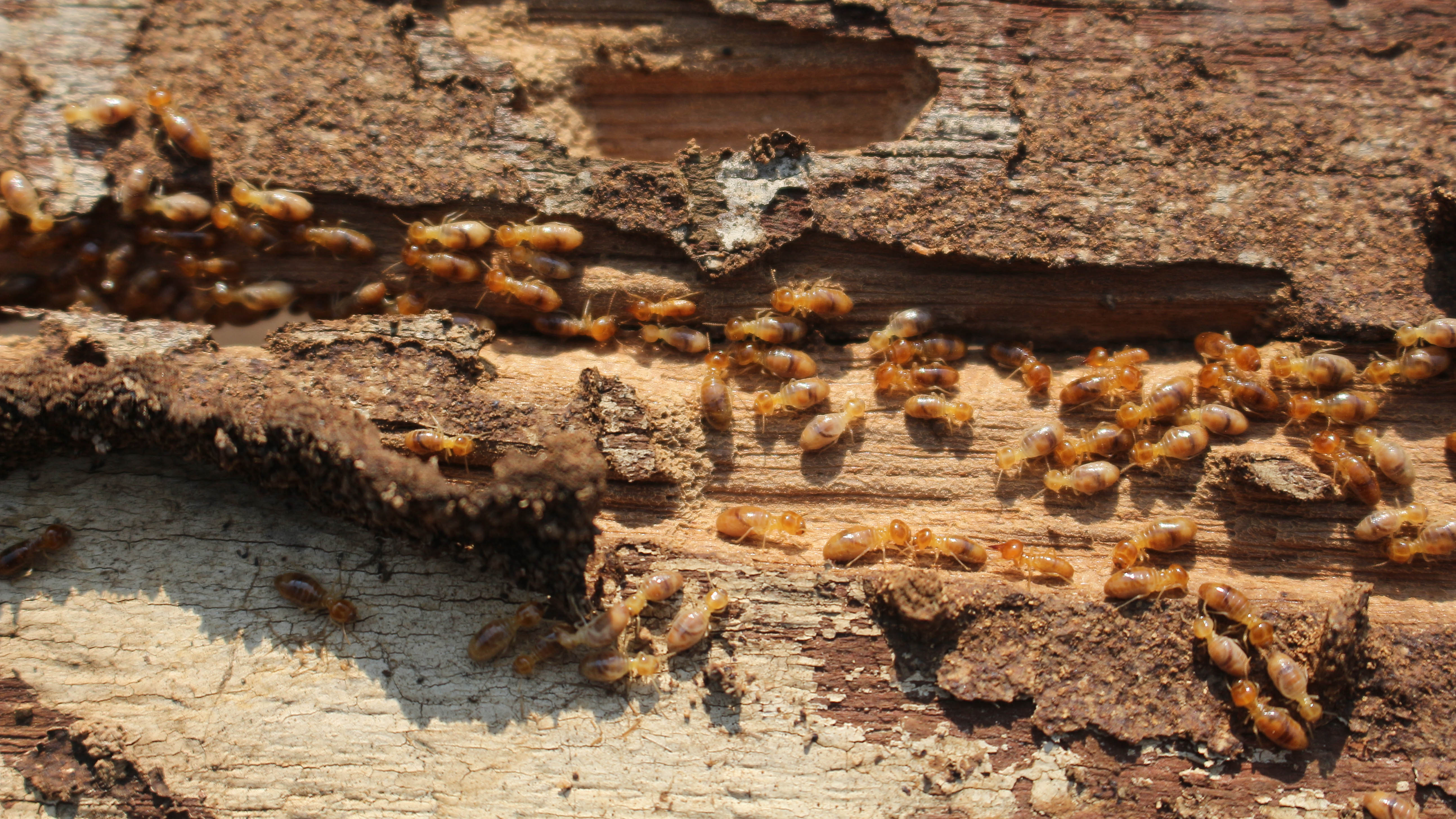
The most effective way to deter both flying ants and termites from your home is to ensure your house is sealed and dry
Thankfully, there are ways to get rid of flying ants safely, as well as ways to get rid of termites. The most effective way to deter both flying ants and termites from your home is to ensure your house is sealed and dry. Any cracks or holes in your foundations or around the exterior walls of your home should be sealed with caulk or expanding foam. Both flying ants and termites can target your home sporadically throughout the year, although termites are more likely around the springtime in warmer areas. So, regular perimeter checks of your home is key.
You’ll also want to keep any moisture issues to a minimum. That means identifying and fixing any leaks in and around your home. Ensuring that any sprinklers or guttering is pointing away from your home and not pooling water anywhere. Damp proofing your basement and/or crawl spaces.
Also, keep any wood or mulch or plant waste away from the boundaries of your home and off the ground. For example, if you’re storing firewood, keep it in a store away from the ground, at least six inches above the soil, and give it a check before bringing it indoors as they’ll hide inside and use it as a way in.
Keep any foliage such as shrubs or plants away from the exterior walls of your home. Plant them further away, but also ensure you keep them well-trimmed so that flying ants and termites can’t use it as a bridge to gain entry to your home.
Finally, make sure you’re avoiding these 7 things that are attracting ants to your home, as well as 7 things that are attracting pests to your home. To avoid infestation of flying ants and termites, you want to make sure you’re not doing anything to encourage them in the first place.







